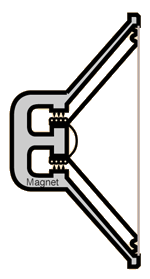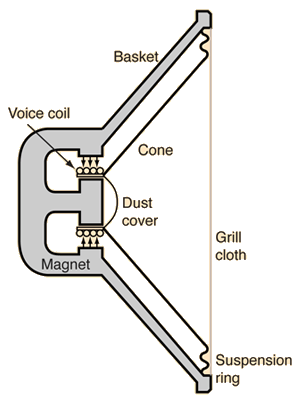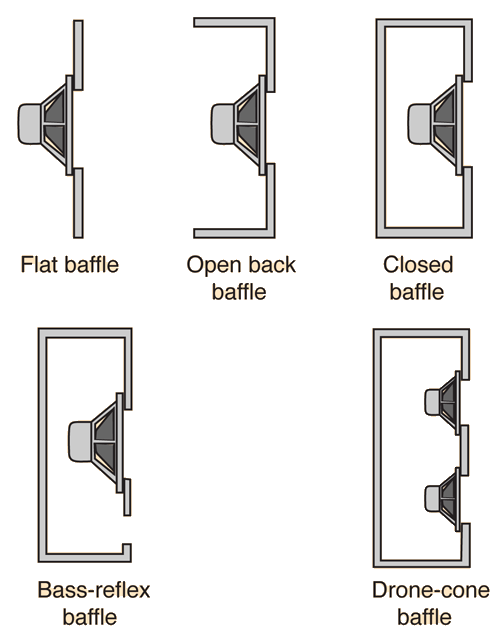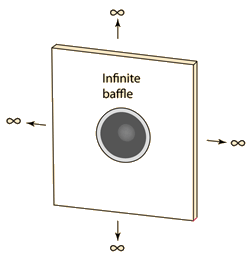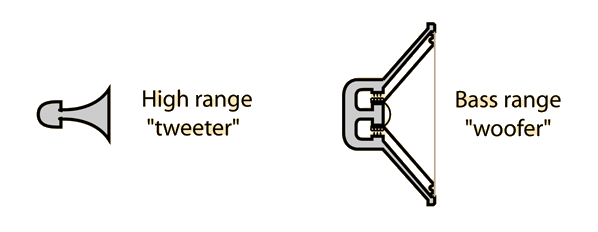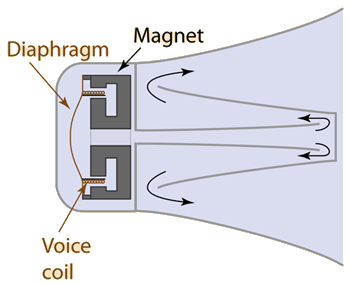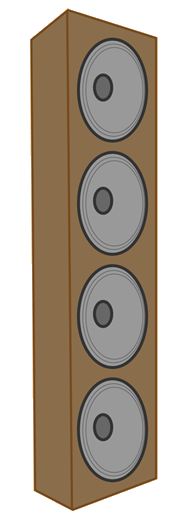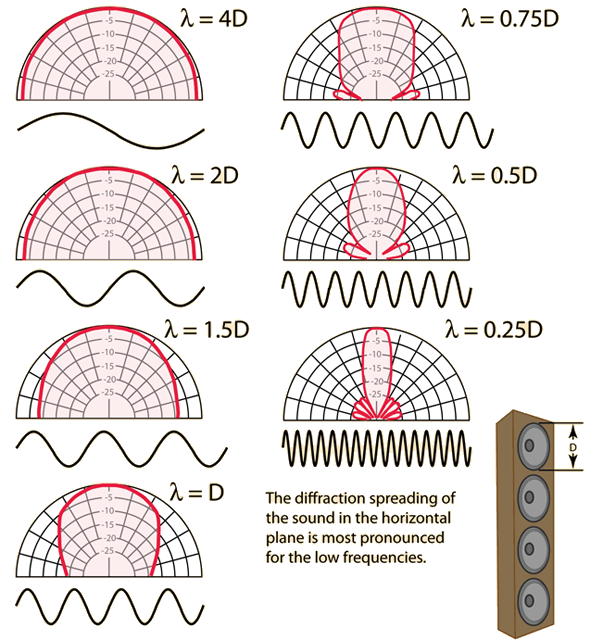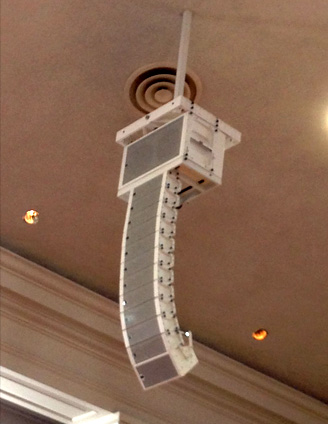Dynamic Loudspeaker Principle
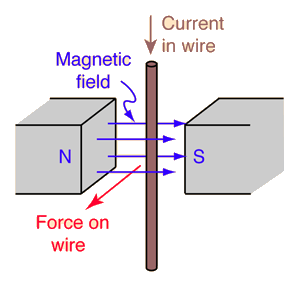
A current-carrying wire in a magnetic field experiences a magnetic force perpendicular to the wire. |
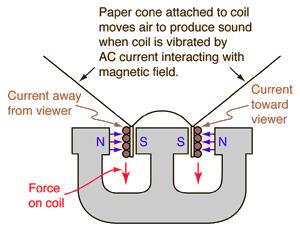 |
An audio signal source such as a microphone or recording produces an electrical "image" of the sound. That is, it produces an electrical signal that has the same frequency and harmonic content, and a size that reflects the relative intensity of the sound as it changes. The job of the amplifier is to take that electrical image and make it larger -- large enough in power to drive the coils of a loudspeaker. Having a "high fidelity" amplifier means that you make it larger without changing any of its properties. Any changes would be perceived as distortions of the sound since the human ear is amazingly sensitive to such changes. Once the amplifier has made the electrical image large enough, it applies it to the voice coils of the loudspeaker, making them vibrate with a pattern that follows the variations of the original signal. The voice coil is attached to and drives the cone of the loudspeaker, which in turn drives the air. This action on the air produces sound that more-or-less reproduces the sound pressure variations of the original signal.
| Loudspeaker basics |
Sound reproduction concepts
Loudspeaker concepts
| HyperPhysics***** Sound | R Nave |
